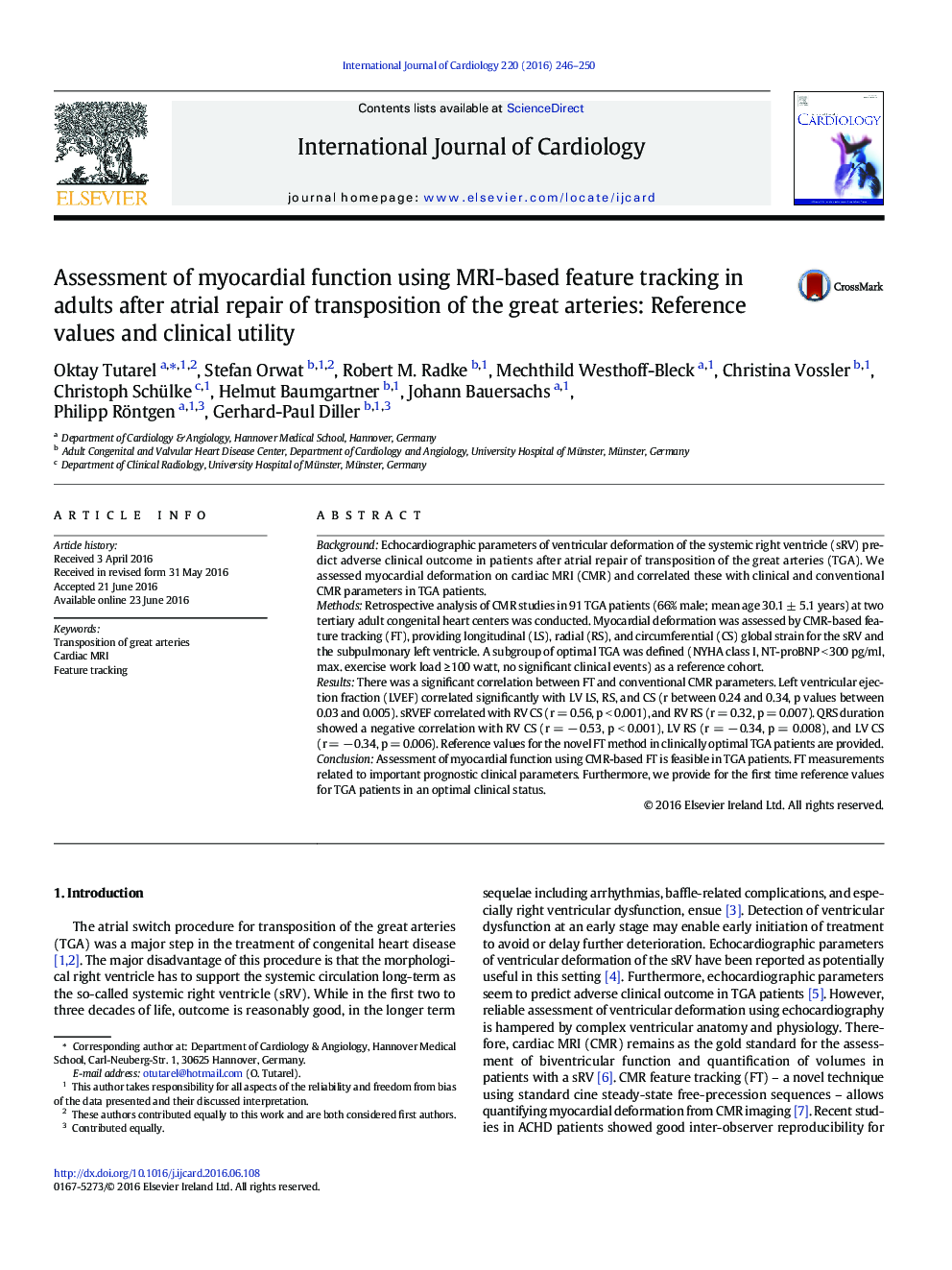| Article ID | Journal | Published Year | Pages | File Type |
|---|---|---|---|---|
| 5963462 | International Journal of Cardiology | 2016 | 5 Pages |
BackgroundEchocardiographic parameters of ventricular deformation of the systemic right ventricle (sRV) predict adverse clinical outcome in patients after atrial repair of transposition of the great arteries (TGA). We assessed myocardial deformation on cardiac MRI (CMR) and correlated these with clinical and conventional CMR parameters in TGA patients.MethodsRetrospective analysis of CMR studies in 91 TGA patients (66% male; mean age 30.1 ± 5.1 years) at two tertiary adult congenital heart centers was conducted. Myocardial deformation was assessed by CMR-based feature tracking (FT), providing longitudinal (LS), radial (RS), and circumferential (CS) global strain for the sRV and the subpulmonary left ventricle. A subgroup of optimal TGA was defined (NYHA class I, NT-proBNP < 300 pg/ml, max. exercise work load â¥Â 100 watt, no significant clinical events) as a reference cohort.ResultsThere was a significant correlation between FT and conventional CMR parameters. Left ventricular ejection fraction (LVEF) correlated significantly with LV LS, RS, and CS (r between 0.24 and 0.34, p values between 0.03 and 0.005). sRVEF correlated with RV CS (r = 0.56, p < 0.001), and RV RS (r = 0.32, p = 0.007). QRS duration showed a negative correlation with RV CS (r = â 0.53, p < 0.001), LV RS (r = â 0.34, p = 0.008), and LV CS (r = â 0.34, p = 0.006). Reference values for the novel FT method in clinically optimal TGA patients are provided.ConclusionAssessment of myocardial function using CMR-based FT is feasible in TGA patients. FT measurements related to important prognostic clinical parameters. Furthermore, we provide for the first time reference values for TGA patients in an optimal clinical status.
